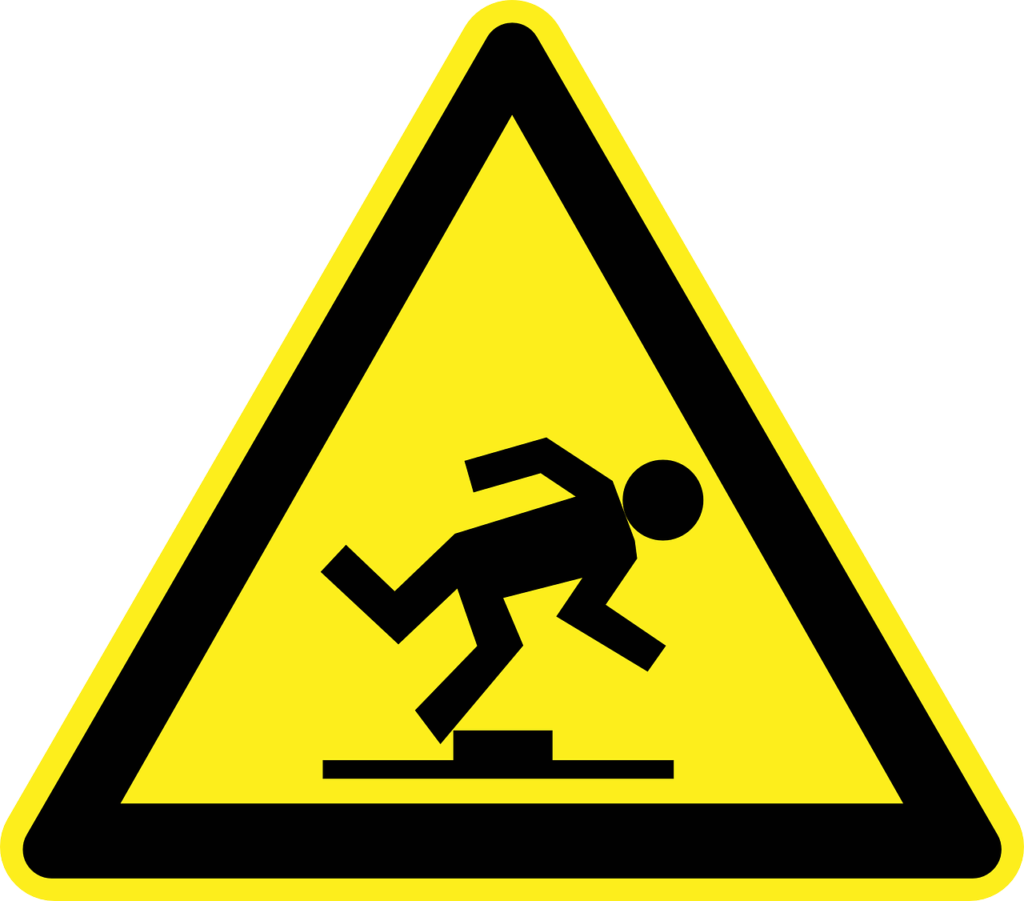
Tripping. Image by OpenIcons from Pixabay
Taking a proactive safety approach by planning ahead to prevent falls is an excellent way to maintain safety and independence as you age. Here are some key steps you can take to create a safer environment:
Conduct a Home Safety Assessment
Start by evaluating your home for potential hazards that may contribute to falls. Look for loose carpets or rugs, cluttered pathways, uneven flooring, and poor lighting. Make necessary modifications, such as securing carpets, removing obstacles, and installing adequate lighting to improve visibility.
Install Grab Bars and Handrails
Consider installing grab bars and handrails in critical areas like bathrooms, staircases, and hallways. These fixtures provide stability and support, reducing the risk of falls and aiding in balance while moving around the house.
Improve Lighting
Ensure that your home is well-lit, especially in areas where falls are more likely, such as stairs, entrances, and hallways. Install brighter bulbs, use motion-sensor lights, and add nightlights in bedrooms, bathrooms, and hallways to help navigate safely during nighttime.
Remove Clutter and Trip Hazards
Keep your living spaces tidy and free of clutter. Secure loose cords, remove small furniture obstacles, and avoid leaving items on the floor. Create clear pathways for easy navigation and reduce the risk of tripping or stumbling.
Maintain Outdoor Safety
Address potential fall hazards in your yard or outdoor areas. Repair uneven walkways or driveways, trim overgrown foliage, and keep the pathways well-lit. Install handrails or sturdy grab bars near entrances or steps to ensure stability when entering or leaving your home.
Wear Proper Footwear
Choose footwear that provides stability, support, and nonslip soles. Avoid wearing loose-fitting shoes or slippers that may increase the risk of trips or falls. Opt for well-fitting shoes with good traction to maintain balance and minimize the chances of accidents.
Stay Active and Exercise Regularly
Engage in regular exercise programs that focus on strength, balance, and flexibility. Activities like walking, tai chi, or yoga can improve muscle strength, coordination, and stability, reducing the likelihood of falls.
Review Medications
Consult with your healthcare provider to review your medications and discuss potential side effects that may affect balance or cognitive function. Some medications can increase the risk of falls, so it’s essential to be aware of any potential risks and take necessary precautions.
Regular Vision and Hearing Check-ups
Maintain regular check-ups for your vision and hearing. Poor vision or hearing impairments can contribute to falls. Address any issues promptly and wear corrective lenses or hearing aids as recommended.
Proactive Safety by Seeking Professional Assistance
Consider consulting with an occupational therapist or a home safety specialist who can conduct a comprehensive assessment of your home and provide personalized recommendations to prevent falls.
By implementing these proactive safety measures and planning ahead, you can significantly reduce the risk of falls, promote safety, and maintain your independence as you age.